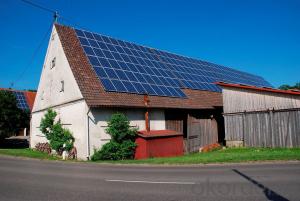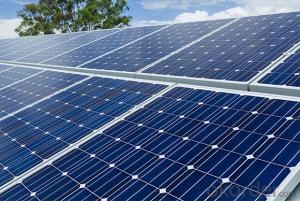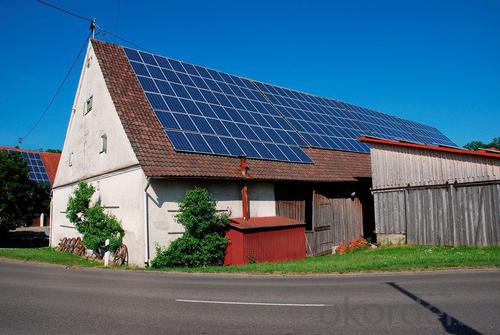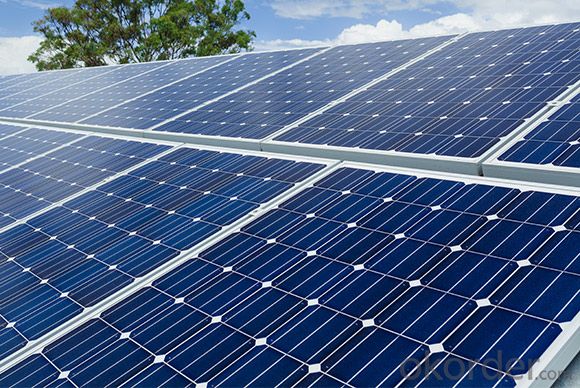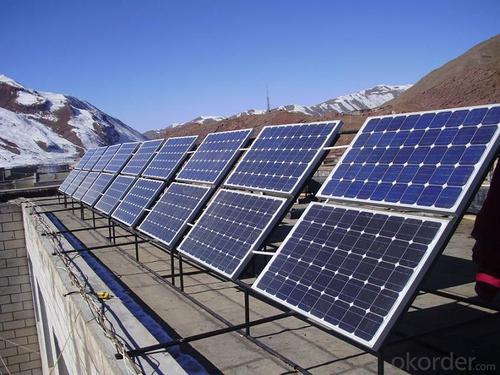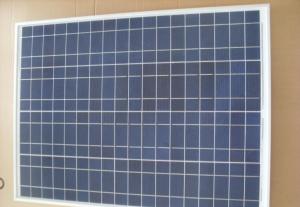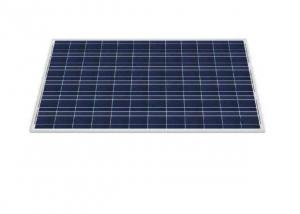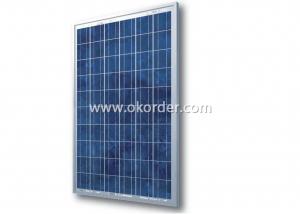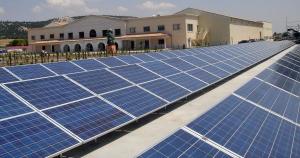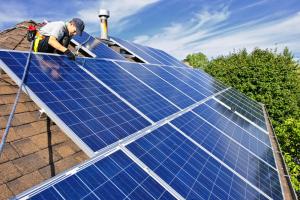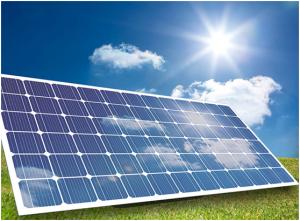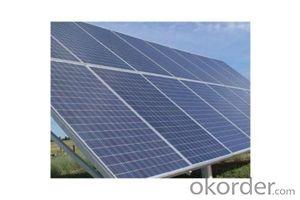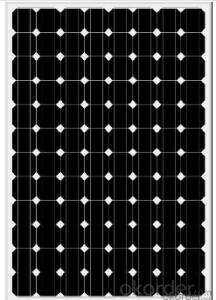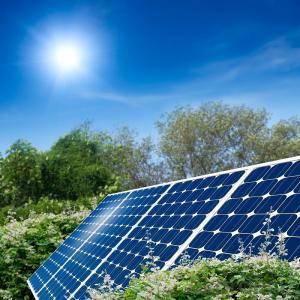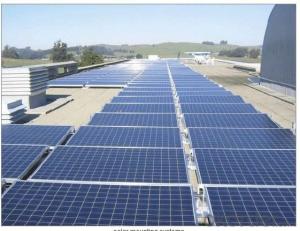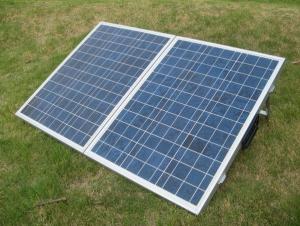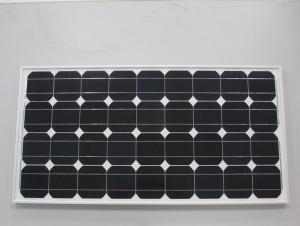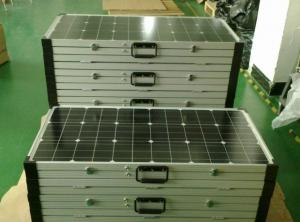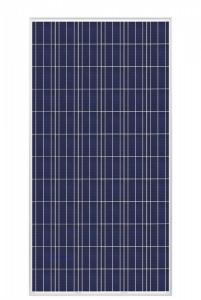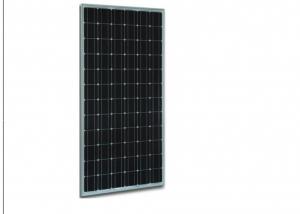Tsc Solar Panels CRM270S156M-60 Mono Crystalline
- Loading Port:
- China main port
- Payment Terms:
- TT OR LC
- Min Order Qty:
- 100000 watt
- Supply Capability:
- 1000000 watt/month
OKorder Service Pledge
OKorder Financial Service
You Might Also Like
Specification
About us
CNBM International Corp, established in 2004, is the business entity for trade and logistic of CNBM Group.With the advantages in Cement, Composite Materials, New Building Materials and Engineering, CNBM mainly concentrate on coal, steel and construction equipments and give priority to solar and wind energy development.CNBM International is highly recognized by its business partners and clients all over the world and has established good business relationship with the customers in over 120 countries and regions all over the world.
Introduction
This installation Manual contains essential information for the electrical and mechanical installation that your must know before installing CUSTOMER PV modules. This also contains safety information you need to be familiar with .All the information described in this manual are the intellectual property of CNBM and based on the technologies and experiences that have been acquired and accumulated in the long history of CUSTOMER. This document does not constitute a warranty, expressed or implied.
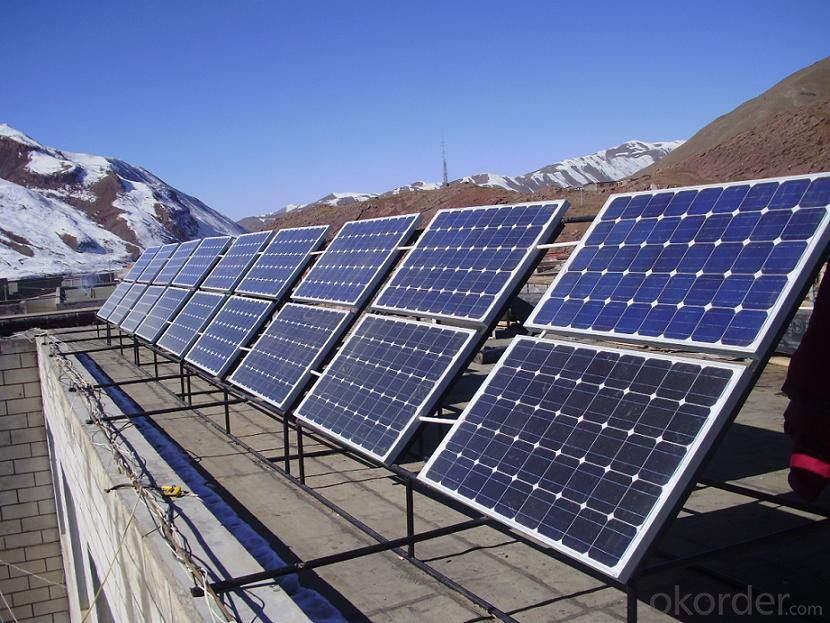
FAQ:
Q1: Why buy Materials & Equipment from OKorder.com?
A: All products offered byOKorder.com are carefully selected from China's most reliable manufacturing enterprises. Through its ISO certifications, OKorder.com adheres to the highest standards and a commitment to supply chain safety and customer satisfaction.
Q2: What is a solar PV module?
A: A solar PV module consists of many solar cells that are connected together (typically in series) and packaged in a frame (typically made of aluminum).
Q3: What are the advantages and disadvantages of monocrystalline solar PV modules?
A: Monocrystalline solar PV modules are the most efficient type of solar PV modules, with the exception of CdTe thin film solar PV modules. As a result, monocrystalline solar PV modules are more expensive when compared to almost all other types of solar PV modules.
Q4: What is the typical service life of a solar PV module?
A: The typical life of a PV module is 25 years. However, superior quality PV modules boast service lives up to 35-40 years (electrical generating capacity is often reduced, however by that point).
- Q: Can solar panels be installed in areas with high seismic activity?
- Yes, solar panels can be installed in areas with high seismic activity. However, extra precautions need to be taken during the installation process to ensure their stability and resistance to earthquakes. Specialized mounting systems, such as those with adjustable foundation designs or seismic restraints, can be utilized to secure the panels in such areas. Additionally, it is crucial to comply with local building codes and regulations to ensure the panels are installed safely and can withstand seismic events.
- Q: Can solar panels be installed on the ground?
- Yes, solar panels can be installed on the ground. Ground-mounted solar panels are a popular option for residential, commercial, and utility-scale solar installations. They are typically mounted on racks or frames that are secured to the ground, allowing the panels to capture sunlight and convert it into electricity. Ground-mounted solar panels are often preferred when there is limited roof space or for installations that require optimal positioning and easy maintenance.
- Q: How can I start working as a solar panel installer/technician without years of education?
- The best suggestion I can give is to call solar installation companies in your area, and ask for their recommendation as to what to do. They may recommend a technical college with an appropriate program. With unemployment rising, new jobs in solar will likely be scarce for a while. You might also inquire at roofing companies. If you apply at a solar company, and can demonstrate that you already have roofing experience, that will be a plus.
- Q: So, I've seen cheap solar panel kits for sale from Harbor Freight, and regardless of whether or not I were to buy a set from them or someone else, I was wondering what the process of implementing a small-scale solar system into your household electrical system would be.I've read articles that started out too in-depth or were speaking of systems on a much larger scale.Can it be as easy as buying the panels and inverter, and plugging it into a socket, or is there more to it?Some of the articles I was reading had mentioned having to contract with your electrical supplier, having to have an electrician tie it all in in some special/ necessary way, using a battery pack (would this be necessary for a tied-in system?), or using the system to only power single items, like a water heater, or plugging items into a connected battery-pack, all of which I'm not sure is necessary or needed for what my goals/ means are/ would be.
- Take okorder /... This unit produces 45W for $90. Inverter is extra. Let's say this unit produces that amount of power for a full 2 hours a day, that's 45W * 2h = 540 Wh or 0.54kWh. If I save that from my electrical company, I would pay about 5 cents. $90 then takes 3800 days or 0 years. At that point, you haven't actually made any money, you've simply recovered what you paid out to buy the unit 0 years ago. Yes, electrical power prices will be going up over the long term but the output of this unit is also not going to be 45W over its lifetime (if it even lasts 0 years) so I really question the economics.
- Q: Can solar panels be damaged by birds or other animals?
- Yes, solar panels can be damaged by birds or other animals. Birds may build nests under the panels or peck at the wiring, leading to potential system malfunctions. Similarly, other animals like squirrels or rodents may chew on the wires or cause physical damage to the panels. It is advisable to take preventive measures to protect solar panels from such animal interference.
- Q: okay so im lookin 4 an article which explains how practical, wokable, feasible solar panels are. only positive points please :) give me the link. PLZ HELP!!!!
- Solar Panels are practical because they provide electricity to your home directly avoiding the rates paid to the utility. They are pay themselves off in 5 years or less and supply an income stream in NJ for 5 years!
- Q: i don't know very much about it, but can you somehow take off the little solar panels off of the outdoor light things and make it so you can hook an outlet up to it and plug in to it like a phone charger for electricity.
- Little solar panels on lights are very low power. The battery in one such may be 0.5 Amp-hours and .2 V ; it may be different but it should be marked on the panel/battery/manual. An outlet in your house is designed to run on 20 V (typically in N. Am.) and they run on alternating current (AC) whereas the panel generates direct current (DC). (If you don't know the difference, do not worry to much but just understand that they are not directly compatible.) You therefore need an inverter to change DC to AC (and lose some although inverters are now very efficient). But the amount of power generated by those panels is still very small. That is why solar lights are low power (just a few watts in most cases). To make things even more irritating, phone chargers do not work off 20 V AC as you are charging the battery and need a low voltage DC -- which is what the solar panel is giving you. It is almost certain that the voltage from the panel will be less than the voltage required for the phone. The charger is mostly cable but there is a black box incorporated and it should say what the voltage and current output are (the input will be 20V). So you should be able to overcome this not by hooking up the panel to a 20V outlet and then plugging the charger in but by hooking up the panel to the phone directly if you can get enough voltage out of the solar panel (or hook up several) and if you fashion a connection device. They already make them -- solar battery chargers and I am sure you can enter that into a search engine and find loads. Typically the panel alone is much more than a solar light -- which shows the relative power requirements.
- Q: I have the wattage of solar panel but i dont know about the voltage amp; current rating of it. Plz explain me about the voltage rating of solar panel.
- The voltage rating and current rating are part of the specifications for the panel. You will have them listed on the spec sheet. The voltage number is usually the open circuit voltage of the panel, the voltage with no load. The current number is the short circuit current of the panel. In use, you need special electronics, called a Maximum Power Tracker (MPT) controller, which adjust the load to get the most power from the panel, and adjust the voltage output via a DC-DC converter to the optimal conditions to charge the attached battery. how to take batteries as per solar wattage ? sorry, don't understand this.
- Q: Can solar panels be installed on electric fences?
- Yes, solar panels can be installed on electric fences. The panels can provide the necessary power to keep the electric fence operational without relying on traditional electrical sources.
- Q: How can I calculate the amount of watts needed for a solar panel to power a water and air pump in gal/hr and a 600 watt LED light?
- Mimi: Solar Power is not really that economical, and has many other disadvantages as well. You did not specify much info in your question as to the size of the water or air pump. So let's make some assumptions to get you some numbers. ) Let's say the water and air pump are about HorsePower (HP). The HP pump , considering efficiency losses, will draw around ,000 Watts , or kW. 2) The 600 Watt LED Light is quite high --- they are usually much smaller lights 40 Watts or less. BTW --- these LED lights are very expensive light as well. Just so you are aware. Between the pump(s) ( maybe 000 to 400 Watts) and the 600 Watt light ----- and without knowing the specifics --- you are probably looking at around 2,000 Watts or 2 kW. A 2 kW Solar PV unit will run around $20,000. The PV unit will only run at full capacity during daylight hours. They usually average about 5 hours per day. So you will only be able to run your pump and LED Lights during the middle of the day --- maybe 0:00 AM to 5:00 PM. If you want to run the pump and lights after sundown, you will need battery back-up. The electric storage batteries will likely run about an extra $5,000. They will last about 5 years. If you decide this doesn't work out well --- you can stay with the local utility --- at $0.0 per kWh. It will cost you about $0.0 per hour to run the pump --- maybe 30 to 50 cents per day. It would cost you about 6 cents per hour to run your light. Maybe 30 or 40 cents per day. You could essentially run your pumps and light several hours each day --- all for about $ per day, or $365 per year. This sounds like a less costly alternative.
Send your message to us
Tsc Solar Panels CRM270S156M-60 Mono Crystalline
- Loading Port:
- China main port
- Payment Terms:
- TT OR LC
- Min Order Qty:
- 100000 watt
- Supply Capability:
- 1000000 watt/month
OKorder Service Pledge
OKorder Financial Service
Similar products
Hot products
Hot Searches
Related keywords
